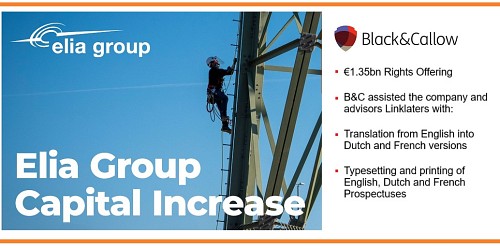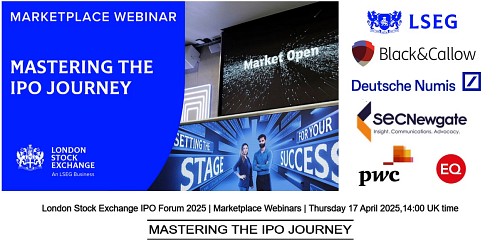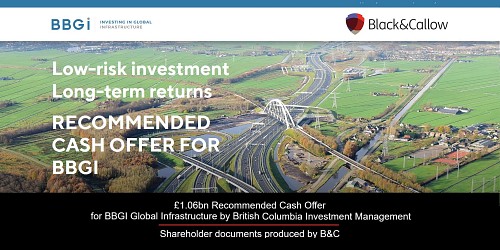14/11/2017

The ESMA’s new Prospectus Regulation, which replaces the old 2003 Prospectus Directive, has created a new format for Prospectuses issued as part of Capital Markets listings – commonly referred to as the new “Tripartite Prospectus". This has implications for both the submission and blacklining of proofs during the iterative drafting process, as well as the publication and sequencing of the Registration Document and Price Range/Pathfinder Prospectus elements.
Managing this process can be tricky given the number of contributors (lawyers, financial advisers and Registrars, alongside the issuer), the levels of disclosure required and the tight timetables involved. Managing the cost of the typesetting and printing process can be even trickier, given that it’s hard to predict what will be involved in the iterative proofing process ahead stamp off.
Mark Shennan, Associate Sales Director, manages a number of clients including advisors JP Morgan, Citi, Cenkos, and Stockdale Securities, as well as law firms such as Allen & Overy and Freshfields.
“There are some simple things clients can do, particularly on the larger projects”, says Mark. “Managing the client’s expectations is very important, particularly on IPOs where the issuer may not have engaged with a financial printer before and will be unfamiliar with the work and costs involved.
“So it’s usually better to overestimate what will be involved, on the basis that the client will be pleasantly surprised if the bill comes in lower than expected, rather than coming in higher than expected, which is often an issue.
“For instance, if your draft Prospectus runs to, say, 300 pages and you think you’ll need four or five turns (proof stages), it may be better to ask your printers to base their estimates on 350 pages and with six or seven turns.”
What are Mark’s tips to ensure effective cost management?
- "Ensure your printer can produce Comparison files in-line, not offline. Our guaranteed LSE-compliant strikethrough blacklined and Comparison files are driven direct from our typesetting system, ensuring there are no issues at Stock Exchange approval stages."
- "Ensure your printer is not outsourcing their typesetting overseas. It may be cheaper for the printer, but it inevitably means not only a slower service, and with more mistakes too. It can be time-consuming (and therefore expensive) for your advisors to rectify. We have the largest in-house financial typesetting capacity in Europe at our London EC2 offices, which means faster service, fewer mistakes and of course, greater deal confidentiality”.
- “Know who you’re getting quotes from. Are they part of a large corporation with high internal costs? Do they pay their salespeople commission only, also known as a “draw system”? If so, they usually ‘lowball’ an estimate but bill much higher, because they won’t get paid commission if they don’t. We’re fortunate to be part of a lean, well-managed organisation with a lower cost base, which means we don’t have the same pressures and means a more honest approach to costs.”
Other recent news

31/03/2025
Power rangers: helping Elia Group with its €1.35bn Rights Offeri…

26/03/2025
Mastering the IPO journey: join the LSE's webinar on Thursday 17…

18/03/2025
B&C assists Britsh Columbia's £1bn bid for BBGI Global Infastruc…

06/03/2025
